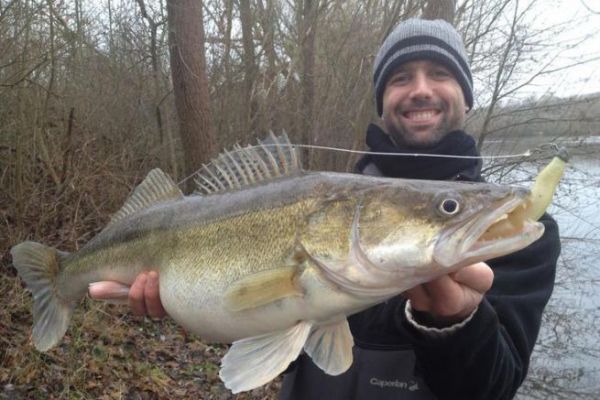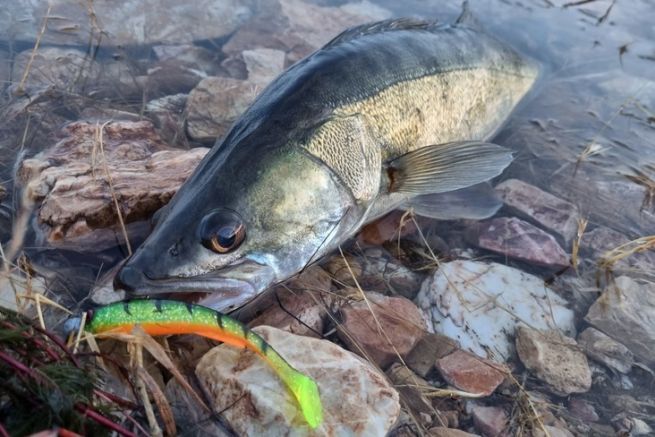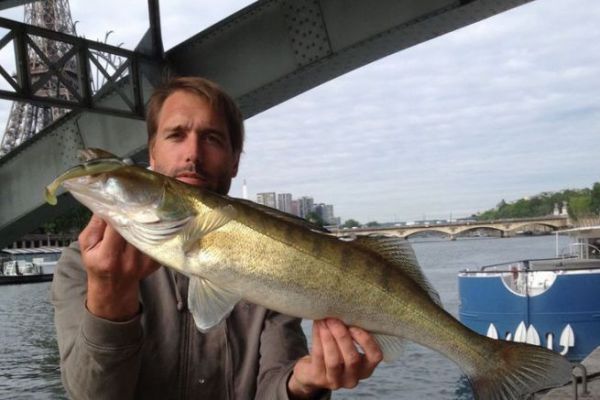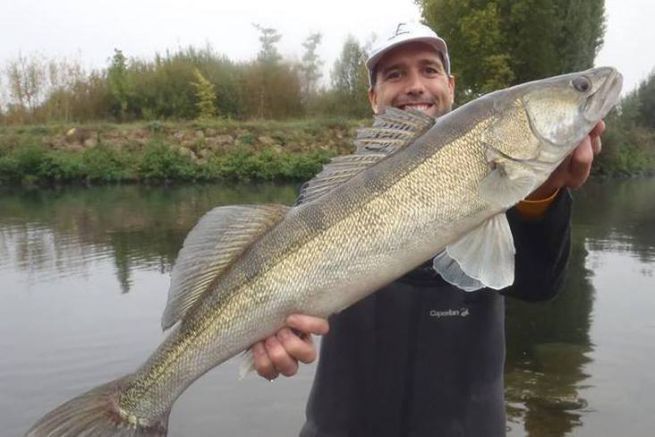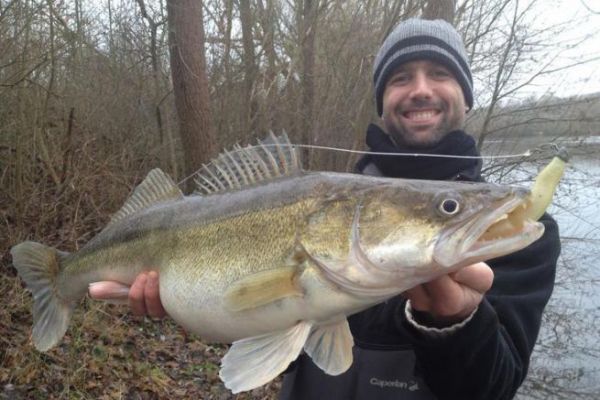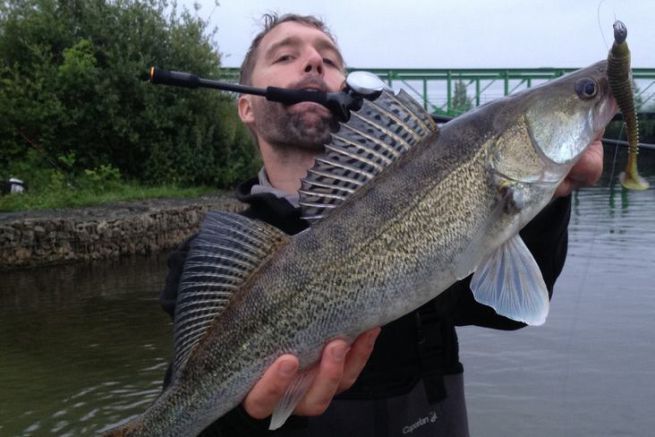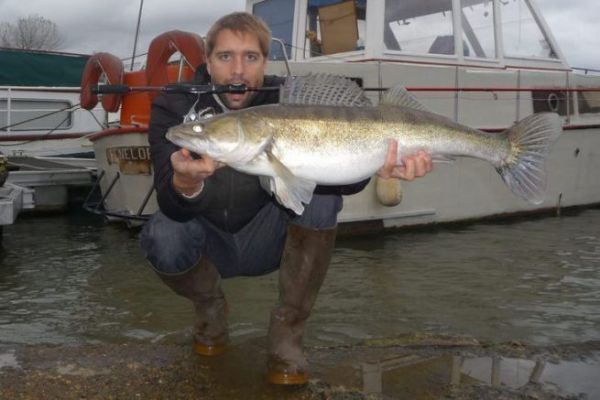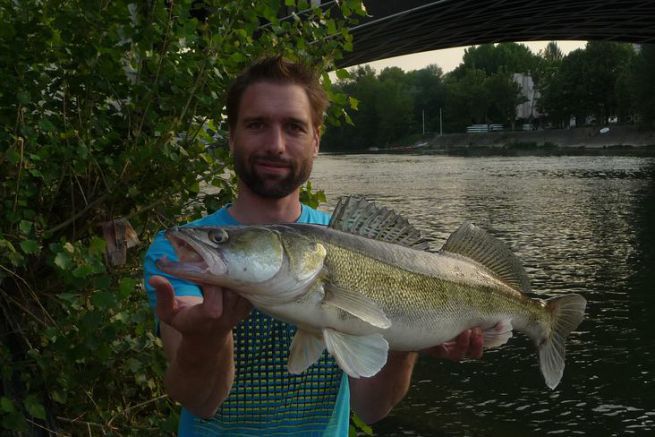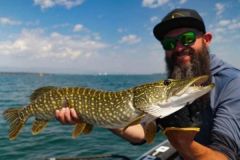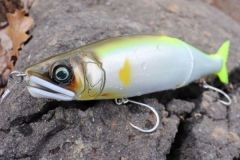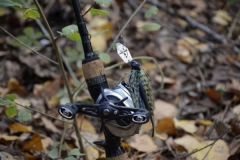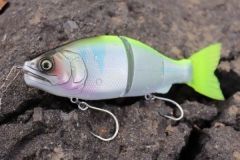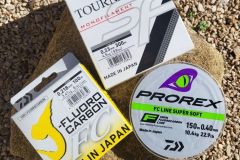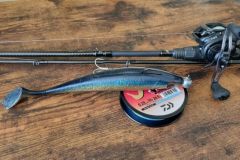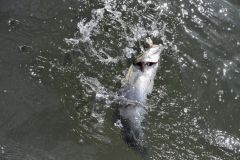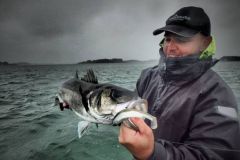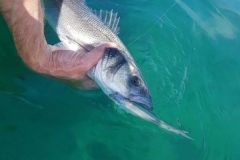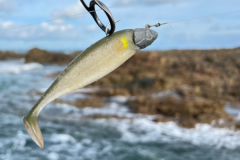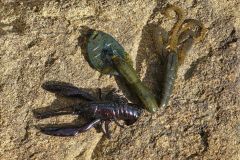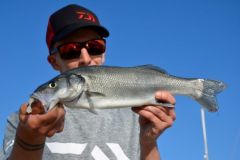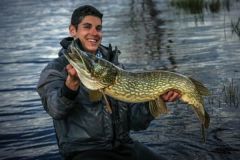Pike-perch fishing with soft lures in rivers can be practised in several different ways, which need to be mastered and alternated to adapt to the demands of the day. However, they all have the same guiding principle: they are close to the bottom and for this reason, in order to avoid snags, common prerequisites are necessary for all techniques to be effective.
Casting and line driving
Casting should be done facing you or slightly upstream depending on your weight. Indeed, contact with the bottom should never be made upstream of your position, otherwise your streamer will create a belly and drag your soft lure along the bottom... Snagging will then be inevitable.
Once you've made contact with the bottom, you need to lift your lure slightly to start the animation. The rod should be held at an angle of about 45° to the surface of the water and pointing slightly upstream. It's imperative to keep your rod taut to keep your lure under tension and to get as much information as possible about the bottom and to feel the bites.
To amplify the feeling of this information, you can put your index finger or thumb on the blank of your rod.
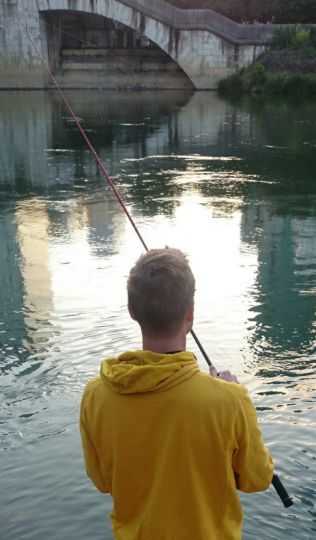
Linear
Line fishing is the simplest way to approach pike-perch fishing. It consists of a continuous retrieve on the reel, with a few pauses to let your lure sink to the bottom and follow the relief.
After casting, lift your lure off the bottom and start a slow retrieve. You'll need to find the right weight to keep your lure close to the bottom so that it doesn't rise into the water.
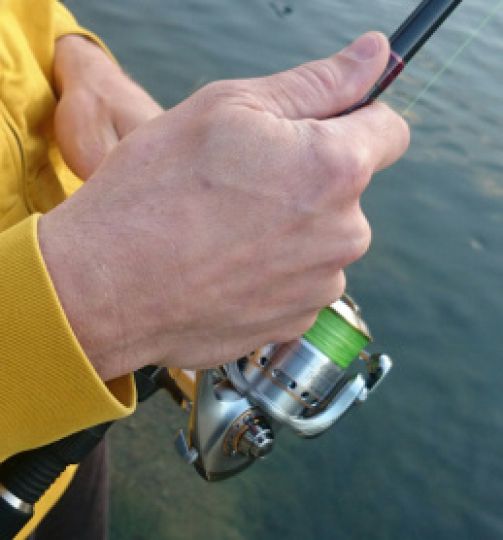
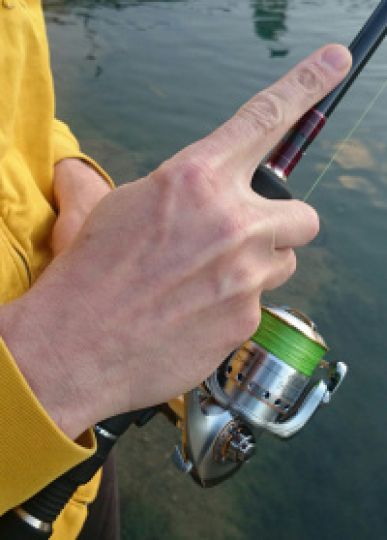
To scratch
Scratch fishing requires greater technical mastery than the previous method. After casting, you first make contact with the bottom and lift off your lure with one, two or three light pulls (the mood of the day will determine amplitude, speed and frequency) so that it drifts in a space of about thirty centimetres above the substrate.
Then you slowly accompany your lure (by lowering your rod) on its descent to regain contact with the bottom and start again. You need to be very concentrated, firstly to feel your lure touch the bottom and, above all, to identify and visualize the cartography of the spot. If you don't accompany your lure into the break, it will fly over it and have little chance of being attacked... This is often the strike zone, as pike-perch often position themselves at the bottom of the bowl to intercept and surprise their prey. It is therefore essential to "marry" these depth variations.
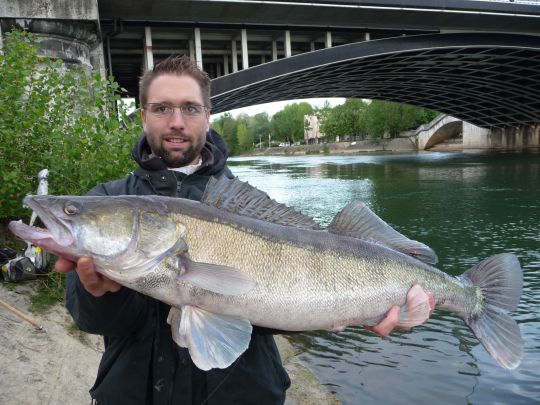
Drift fishing
Drift fishing is a gentler, lighter approach than scraper fishing. You need to keep your lure close to the bottom in the most natural way possible. This is a form of drift fishing where you regain contact with the bottom at regular intervals and let your soft lure drift naturally downstream as a struggling prey would.
The trick is to find the right weight to make the drift as natural as possible. By multiplying your outings, you'll find the standard ballast to start your outing on a defined spot. After that, you'll need to fine-tune the weight according to the mood of the day.
Try to form a mental picture of your lure's progress as you cast, so that you can make the right movements.

Drop shot
The drop shot is a fishing technique I'm not very fond of, but which proves particularly effective, especially in winter. It consists in presenting a drifting lure above the sinker using a palomar knot. For perch, the movements should be fast, but for pike-perch they should be much slower, punctuated by very long pauses.
As you can see, when fishing for pike-perch, concentration is fundamental. Not only to have perfect control of your drift, but also to feel the contact with the bottom (which becomes more and more discreet the lighter the weight of your jig head) and thus feel all the bites. In addition, precise knowledge of the topography of your fishing spots is essential to follow their relief.
